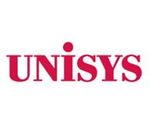What Is IT Management Software?
IT management software is a collection of tools and apps meant to help and streamline various parts of managing an organization's information technology (IT) infrastructure. This might range from network and system administration to project management, security, and compliance. At its heart, IT management software is designed to assist businesses in efficiently planning, organizing, and implementing their IT policies and processes.
This can include asset management, software deployment, and network and system performance monitoring and troubleshooting. One significant advantage of employing IT management software is the ability to automate numerous mundane processes, saving time and resources for IT personnel. These systems also provide centralized administration and visibility, allowing firms to more effectively track and manage their IT assets and activities.
Another advantage of IT management software is its capacity to deliver analytics and reporting, which allows firms to get insights into their IT operations and make data-driven choices. When shopping for IT management software, you should consider your individual requirements and goals. Each supplier may give different features and functionalities, therefore it is critical to determine which will best suit your organization's IT management goals.
When selecting the proper IT management software for your organization, also consider scalability, compatibility, and user-friendliness. It is also important that you read reviews and speak with other firms to get comments and insights into their experiences with various software solutions. Overall, investing in IT management software can help firms streamline operations, increase productivity, and improve overall IT performance. Organizations that use the proper software may successfully manage their IT infrastructure, decrease costs, and promote innovation and growth.
What Are The Recent Trends In It Management Software?
In recent years, the world of IT management software has experienced rapid expansion and innovation. Businesses and organizations' requirements and desires grow in tandem with technological advancement. As a result, IT management software has evolved and extended to meet these changing requirements.
We'll look at the latest trends in IT management software and how they can help your business.
1. Cloud-Based Solutions: One of the most noticeable changes in IT management software is the migration to cloud-based solutions. With the development of remote work and the demand for more mobility, organizations are choosing software that can be accessed and managed from any location with an internet connection. Cloud-based IT management software has numerous benefits, including cost reductions, scalability, and increased collaboration.
2. Artificial intelligence And Automation: Another emerging trend is the integration of artificial intelligence (AI) and automation into IT management software. These technologies can assist to streamline and automate operations like data analysis, system monitoring, and security management. This not only saves time and resources, but it also aids in the identification and resolution of possible problems before they become serious.
3. DevOps And Agile Methodology: In today's fast-paced technological world, it is critical to deliver high-quality software quickly. DevOps and agile approaches have gained popularity, and as a result, IT management software now includes tools that enable these practices. This covers tools for teamwork, continuous delivery, and release management.
4. Increased Focus On Security: With the increase in cyber threats, security has become a primary responsibility for businesses of all kinds. This has led to a greater emphasis on security in IT management software. Many solutions now include powerful security features like multi-factor authentication, encryption, and real-time threat monitoring.
5. Integration & Interoperability: As firms employ many software and systems, integration and interoperability between products has become increasingly important. Many IT management software suppliers have responded by offering interfaces with popular applications and platforms, making it easier for enterprises to centralize their operations and data.
Benefits Of Using IT Management Software
IT management software can help your firm by optimizing and simplifying its IT operations.
Here are some major advantages of utilizing IT management software:
1. Centralized Management: With IT management software, you can manage all of your IT assets, such as hardware, software, and network devices, from a single spot. This eliminates the need for manual tracking and monitoring, saving valuable time and effort.
2. Increased Efficiency: IT management software enables you to automate mundane chores like software updates, patch management, and scheduled backups. This allows your IT personnel to focus on more important activities, resulting in enhanced production and efficiency.
3. Improved Security: IT management software protects your systems and data by including capabilities such as vulnerability detection, antivirus protection, and data backup and recovery. This helps to reduce potential cybersecurity threats and protects the continuity of your business operations.
4. Cost Savings: By optimizing IT procedures and automating operations, IT management software can help you save money over time. It lessens the need for manual work and lowers the danger of human mistake, resulting in cost savings for your firm.
5. Increased Visibility And Control: IT management software provides real-time monitoring and reporting capabilities, giving you total visibility into your IT assets and activities. This enables you to quickly detect and address any faults or bottlenecks, resulting in increased control over your IT operations.
6. Scalability: As your firm expands, so will its IT infrastructure. IT management software allows you to simply scale up or down as needed, giving it a versatile solution for your organization's changing requirements.
7. Compliance: IT management software enables you to comply with industry norms and standards such as GDPR and HIPAA. With features such as data encryption and access controls, you can protect sensitive information while also ensuring that your firm complies with applicable rules.
Important Factors To Consider While Purchasing IT Management Software?
As technology continues to play an important part in modern enterprises, the necessity for efficient and effective IT management software grows. From small start-ups to major businesses, having the correct tools to manage and optimize your IT infrastructure is critical to success. However, with so many options on the market, selecting the correct IT management software can be intimidating.
To help you navigate this process, here are some crucial aspects to consider when choosing IT management software.
1. Identify Your Individual Demands: Before you begin your search for IT management software, you must first determine your specific needs and expectations. Every business has unique IT requirements, so it is critical to identify which features and functionalities are crucial for your corporation. Do you require software to monitor network performance? Are you looking for a tool to automate tasks? Understanding your requirements will allow you to limit down your selections and select software that is best suited to your business.
2. Scalability: As your firm expands, so will your IT infrastructure. As a result, scalability is an important consideration when selecting IT management software. It is critical to select software that can support your future expansion ambitions without the need to replace it in a few years.
3. Integration Capabilities: In today's technologically advanced world, it is usual for businesses to use multiple software and apps to run their operations. As a result, it is critical to verify that the IT management software you select integrates with the other tools you already use. This not only streamlines your procedures, but it also saves time and effort when managing different systems.
4. User-Friendliness: IT management software should simplify rather than complicate your job. It is critical to select software that is user-friendly and simple to navigate. This not only saves time and increases productivity, but it also shortens the learning curve for your team.
5. Security Features: With the rise of cyber threats, security has become a primary priority for enterprises. As a result, it is critical to select IT management software that includes strong security measures. Look for software that includes features like data encryption, firewall protection, and automatic security upgrades.
6. Cost: IT management software can be a considerable expenditure, so keep this in mind when making a purchase. While it may be tempting to go with a cheaper choice, it is critical to consider the long-term worth and benefits that the program will bring. Consider your return on investment and potential long-term cost reductions.
7. Customer Support: If you have any problems with the program, it is critical to have dependable customer assistance. Look for software vendors who offer 24-hour support and have a track record of giving prompt and effective assistance.
What Are The Key Features To Look For In IT Management Software?
When selecting an IT management software for your company, it is critical to carefully assess its characteristics. A complete program should provide a wide range of capabilities for efficiently managing your IT infrastructure and operations.
The following are some significant aspects to look for in IT management software:
1. Network Monitoring And Management: The software should be able to monitor and manage the complete network, including devices, servers, and applications. This enables you to identify and troubleshoot network issues in real time, resulting in smooth operations and little downtime.
2. Centralized Dashboard: A centralized dashboard is required for monitoring your complete IT infrastructure from a single interface. This tool gives you a comprehensive picture of your systems, allowing you to rapidly detect and resolve any difficulties.
3. Asset Management: Managing your IT assets, such as hardware and software, can be complex. Look for software that supports asset management functions such as inventory tracking, licensing management, and hardware/software lifecycle management.
4. Mobile Access: In this digital age, having mobile-friendly software is critical for effective management. Look for software that allows you to access and administer your IT systems remotely via mobile devices, allowing you to keep on top of things even while you're not at work.
5. Help Desk And Ticketing System: Having an integrated help desk and ticketing system can dramatically improve the efficiency of your IT support process. This feature enables customers to submit requests and issues, while simultaneously providing IT experts with a centralized platform to track and handle them.
6. Automation And Integration: A strong IT management software should be able to automate normal processes while also integrating with other tools and systems, such as CRM and project management software. This saves time and effort while also increasing overall efficiency.
7. Reporting And Analytics: Reporting and analytics capabilities provide useful information about the operation of your IT systems and processes. Look for software that provides configurable reports and dashboards, allowing you to track critical metrics and make data-driven decisions.
8. Security: With cyber dangers on the rise, it is critical to purchase software that includes strong security measures. This includes network security, data encryption, and user access controls to safeguard your IT infrastructure against potential breaches.
Why Do Businesses Need IT Management Software?
Businesses require IT management software to efficiently manage and optimize their IT infrastructure and operations. This program has a variety of features and capabilities that can help firms optimize their processes, enhance productivity, and cut expenses.
Let's look at some of the main reasons why firms should invest in IT management software.
1. Centralized IT Management: IT management software enables organizations to centralize their whole IT management process. This means that all aspects of the IT infrastructure, including hardware, software, and networks, can be handled via a single platform. This saves time and lowers the possibility of errors produced by different systems and tools.
2. Increased Efficiency And Productivity: IT management software enables firms to automate a variety of IT processes, including software upgrades, fixes and backups. This frees up IT professionals from regular activities, allowing them to focus on more vital initiatives, resulting in increased efficiency and production.
3. Comprehensive Monitoring And Reporting: Businesses may monitor and report in real time using IT management software. This enables IT professionals to swiftly identify and resolve system faults, avoiding potential downtime and optimizing system performance.
4. Cost Savings: By automating routine processes and minimizing the likelihood of errors, IT management software can help firms save money in the long term. It also enables organizations to track and optimize their IT costs, allowing them to make better budgeting decisions.
5. Security And Compliance: IT management software includes security capabilities like data encryption and firewalls, which help firms safeguard sensitive data and networks from cyber threats. It also helps firms follow compliance norms and regulations while maintaining data security and integrity.
6. Scalability: As organizations develop, so do their IT needs. IT management software is scalable, allowing businesses to swiftly adapt to changes in their IT infrastructure and processes without substantial disruption. Overall, IT management software is a valuable resource for firms of all sizes and industries. It enables businesses to better manage and optimize their IT resources, increase efficiency and productivity, and assure data security and compliance. Investing in IT management software can not only benefit firms today, but also position them for future success.
How Much Time Is Required To Implement IT Management Software?
The implementation time for IT management software varies depending on a number of factors, including the product's complexity, the size of the organization, and the extent of customization necessary. The implementation procedure can last anything from a few weeks to many months. The first step in installing IT management software is to understand your organization's specific requirements and goals.
This entails undertaking a detailed audit of your existing IT infrastructure and processes. Once the requirements have been established, the software provider will collaborate with your team to develop a specific implementation strategy. The actual installation and configuration of the software might take anything from a few days to a few weeks, depending on the size of your organisation.
This involves duties like configuring the program, integrating it with other systems, and creating user accounts and permissions. Following the initial setup, the following step is testing and training. Testing guarantees that the program functions properly and fulfills the intended specifications. Training is also required to guarantee that your staff is adept in utilizing the program and can fully realize its potential.
The total implementation process also includes data migration, which is the transfer of existing data from legacy systems to the new IT management software. This can take a long time depending on the amount of data to be moved. Once the software has been fully implemented and tested, it is ready to go live and be used in daily operations. However, it is important to remember that the implementation process does not finish here. Ongoing support and maintenance are critical for the software's effective operation, and may necessitate additional time and resources.
What Is The Level Of Customization Available In IT Management Software?
IT management software is a critical tool for modern enterprises since it provides a single platform for controlling multiple parts of an organization's IT infrastructure. The level of customization offered by IT management software is an important feature to consider when selecting the proper solution. This refers to users' capacity to modify the software to their own requirements and processes.
The level of flexibility possible in IT management software varies significantly between packages. Some software may have limited customization choices, but others offer a high degree of flexibility and adaptability. Buyers should examine their individual needs and the level of customization required for their firm. Customization includes the option to construct bespoke workflows.
This enables firms to develop and change workflows that are consistent with their specific processes and procedures. Companies may use the correct IT management software to tailor workflows to their specific needs, increasing productivity and streamlining operations. Another important part of customisation is the flexibility to add and remove features based on business requirements.
This enables businesses to personalize the software to their specific needs, without being constrained by superfluous features or services. Furthermore, as a firm develops and expands, the software should be adaptable to the organization's changing needs. Customization also includes interfacing with other applications and systems. The ability to interact with other tools and platforms can significantly improve the usefulness of IT management software.For example, integration with project management software can provide a comprehensive perspective of IT projects and activities, enabling for improved planning and resource allocation.
Furthermore, customers should examine the level of flexibility offered for reporting and analytics. Businesses with robust reporting capabilities can develop customized reports and dashboards, offering useful insights into their IT infrastructure's performance and suggesting areas for improvement. Finally, IT management software should be easy to customize. User-friendly interfaces and straightforward customization options can greatly lessen the learning curve and help firms adjust software to their specific needs.
Which Industries Can Benefit The Most From IT Management Software?
IT management software is an essential tool for businesses of all sizes and industries in the digital age. With the rapid advancement of technology and an increased reliance on digital technologies, firms must efficiently manage their IT infrastructure. But which sectors will profit the most from IT management software?
Let's have a closer look.
1. Information Technology Business: It goes without saying that IT management software can be extremely beneficial to the IT business. With the ever-changing technological world, IT organizations want sturdy and efficient solutions for managing their complex networks, systems, and applications. IT management software provides them with the capability and capabilities they need to simplify operations, improve productivity, and optimize resources.
2. Financial Services Industry: The financial services business can also profit substantially from IT management software. This industry handles sensitive financial data, thus any IT-related failure can have serious ramifications. IT management software enables financial institutions to manage their IT infrastructure securely, ensuring data safety and regulatory compliance. It also allows them to monitor their systems and networks in real time, identifying and resolving issues as they arise, and maintaining high performance and availability.
3. Healthcare Industry: The healthcare industry is quickly digitizing, with electronic health records, cloud-based systems, and other digital solutions becoming the norm. With the digital transition comes the requirement for strong IT management. Healthcare firms can use IT management software to securely handle patient data, maintain regulatory compliance, automate operations, and improve system and network performance. This eventually leads to improved patient care and results.
4. Education Industry: In recent years, educational institutions have adopted technology to better their operations and students' learning experiences. This has resulted in sophisticated IT infrastructures that require meticulous administration. IT management software can assist educational institutions in streamlining their IT operations, managing their networks and devices more efficiently, and providing a secure and reliable learning environment for both students and teachers.
5. Government And Public Sector: Government agencies and public sector enterprises handle a high volume of sensitive data and have large-scale IT infrastructures. IT management software can assist these organizations in managing their networks, systems, and applications, guaranteeing data security and compliance with government laws. It also allows companies to minimize operational expenses and maximize IT resources, which benefits both taxpayers and citizens.
Conclusion
Choosing the correct software is more than just comparing specifications; it is about choosing a solution that integrates effortlessly into your processes, supports your growth ambitions, and provides measurable value over time. The optimum option will meet your current demands while remaining adaptable as your firm grows, ensuring that you do not outgrow your investment too soon.
When comparing choices, consider functionality, ease of use, scalability, integration capabilities, and the quality of customer support provided. Request demos, check reviews, and compare pricing models to verify you're receiving good quality and value. A well-informed decision made today can save your company time, money, and frustration in the future.
By approaching the purchasing process with a clear awareness of your needs and a willingness to conduct extensive research, you'll be able to choose a solution that not only satisfies your current needs but also positions your company for long-term success. The proper decision can help you optimize workflows, increase productivity, and get the competitive advantage you need in an ever-changing market.




jes-logo.jpg)

















